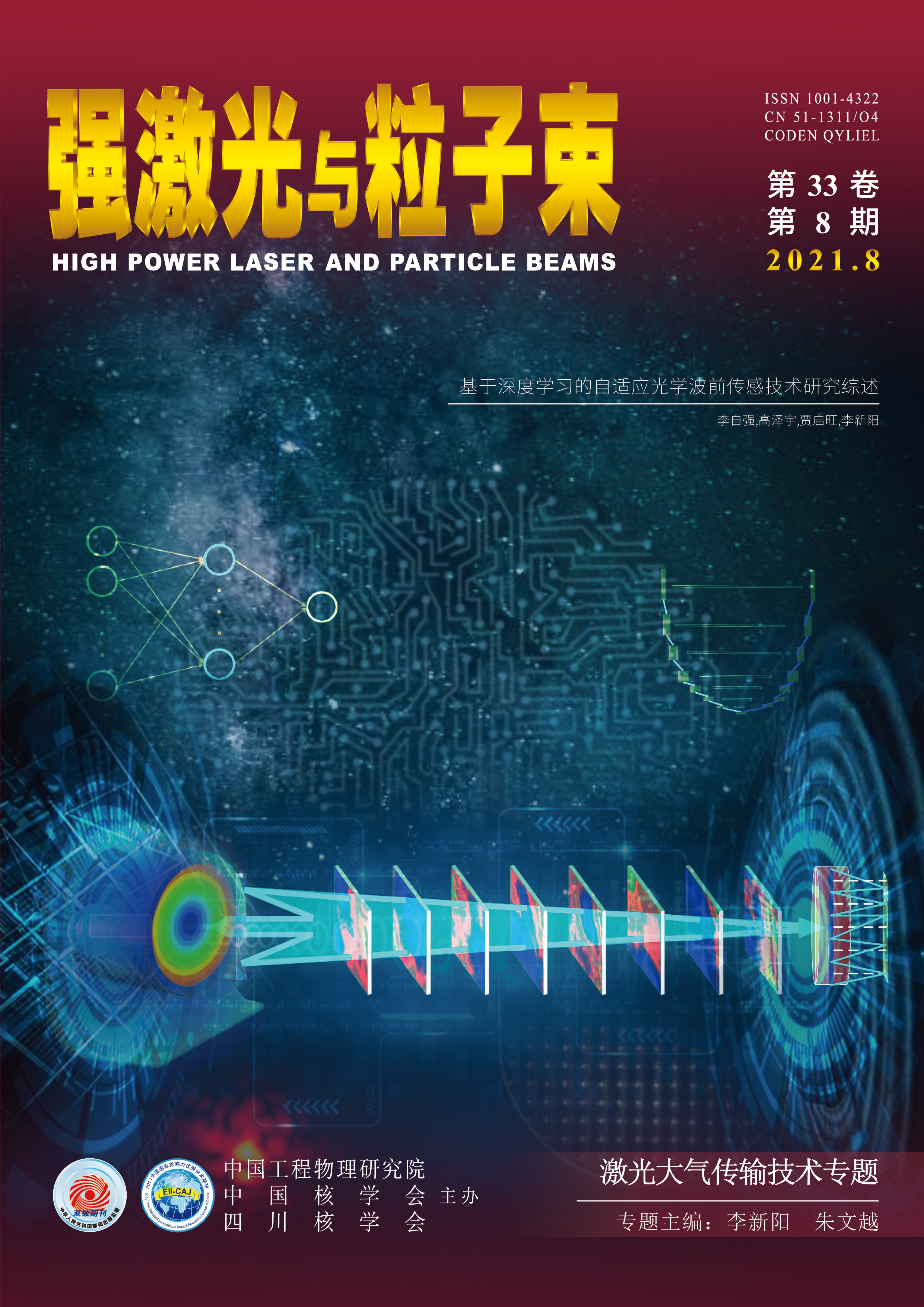2021 Vol. 33, No. 8
Wavefront sensing is an important part of adaptive optics system, which plays a key role in the fields of ground-based telescopes, laser transmission in atmosphere, wireless optical communication, laser nuclear fusion, and freeform surface optical me...
The problem of high-power laser beams propagating through the atmosphere will be encountered in applications, such as the ground-based laser space-debris cleaning, and transportation of the laser radiation produced by solar power from space orbits to...
In chronological order, this paper summarizes the research progress and technical classification of adaptive optics technology in the application of wireless optical communication system at home and abroad. Then it introduces the work of Xi’an Univer...
In recent years, Adaptive Optics (AO) system is developing towards miniaturization and low cost. Because of its simple structure and wide application range, wavefront sensorless (WFSless) AO system has become a research hotspot in related fields. Und...
Beam scanning technology based on optical phased arrays has great potential for applications in the fields of LIDAR, space optical communication, and optical switching. Among them, the microlens array optical phased array can modulate the tilted phas...
In recent years, optical fields manipulation has become a hot research topic and optical coherence manipulation can induce many novel physical effects. The laser beams with special correlation structure obtained by coherence control not only exhibit ...
Solid-state zigzag tube laser (SSZTL) is a new type of solid-state laser source with structural compactness, high gain, as well as direct transmitting. To solve the problem that the beam quality of the tube laser significantly degrades during long-di...
Isoplanatic angle is an important parameter in atmospheric optics field, and it is important for astronomical site optics selection, and evaluation of adaptive compensation for effects of atmospheric turbulence. Past measurement techniques of isoplan...
The structure of optical path coupling transmission system between platforms and the realization method for optical axis stability control are introduced in this paper. The coupling correction system and detection control system are designed, and the...
Phase diversity technology can directly use the intensity information of two or more images to reconstruct the wavefront information and high-resolution image of the target. It has the advantages of simple optical setup, low cost and suitable for ext...
Detecting wavefront phase information is the key to realize adaptive optics wavefront compensation. Using convolutional neural network (CNN) instead of wavefront sensor for wavefront reconstruction, the system can be simple and easy to implement, and...
The analysis of the lightning overvoltages of the distribution network is related to safe and reliable power supply of the power system, which needs to be paid attention to. However, the structure of the distribution network is complex, and an effect...
Sensitivity analysis of cable crosstalk to uncertain parameters is studied using stochastic reduced order model (SROM), and then the uncertainty of cable crosstalk is predicted. To verify the prediction, a three-conductor transmission line (TL) exper...
Electron cooling method is used for the High Intensity heavy-ion Accelerator Facility (HIAF), in order to reduce the beam emittance and momentum spread of heavy ion beams, hence to improve the accuracy and luminosity of nuclear physics and atomic phy...
The interferometric measurement of the transverse beam size based on synchrotron radiation is a non-intercepting high precision measurement method. Compared with the imaging method, the interferometric method can measure smaller beam size and get bet...
The dynamic characteristic parameters of the Marx generator can be obtained by modal analysis. In this paper, the simulation analysis and modal experiment of the 32-stage modular Marx generator are conducted to evaluate its mechanical environment ada...
The performance of the neutral beam injection arc power supply seriously affects the stability of the arc discharge and the efficiency of the neutral beam heating. HL-2A device arc power supply adopts linear power supply technology based on thyristor...
A special readout electronic system was developed to meet the needs of the 3He multiwire proportional chamber detector (MWPC) of multi-functional reflectance spectrometer (MR) of China Spallation Neutron Source (CSNS) . The system is mainly composed ...
Using the constructed electric field trap, Penning ion trap devices can constrain ions and are already applied in some research fields such as nuclear physics in which the mass of ions can be measured exactly and quantum computing in which the Pennin...




 Email alert
Email alert RSS
RSS

